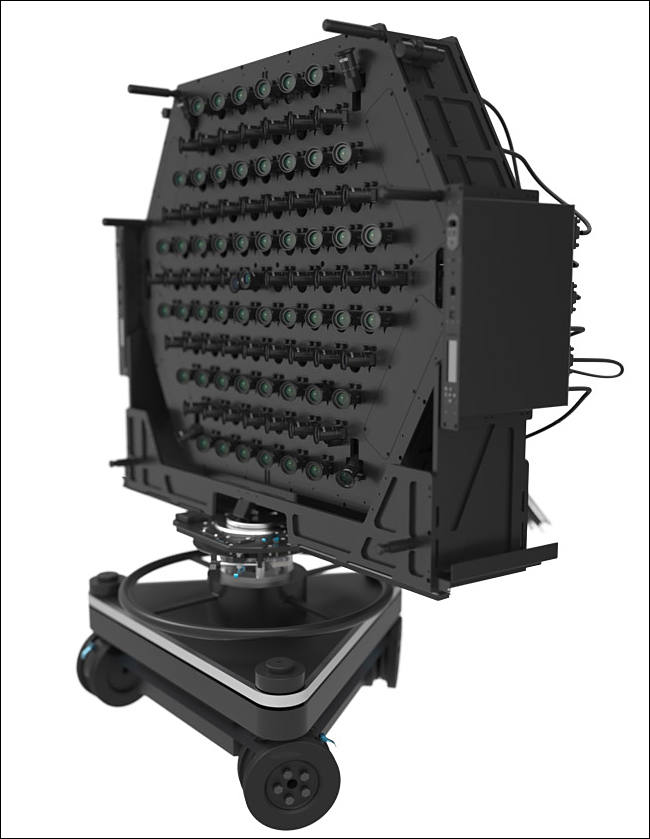
-

Lytro’s Immerge Light Field camera is meant for professional high-end VR productions. It may be a beast of a rig, but it’s capable of capturing some of the best looking volumetric video that I’ve had my eyes on yet. The company has revealed a major update to the camera, the Immerge 2.0, which, through a few smart tweaks, makes for much more efficient production and higher quality output.
Light-field specialist Lytro, which picked up a $60 million Series D investment earlier this year, is making impressive strides in its Light Field capture and playback technology. The company is approaching Light Field from both live-action and synthetic ends; last month Lytro announced Volume Tracer, a software which generates Light Fields from pre-rendered CG content, enabling ultra-high fidelity VR imagery that retains immersive 6DOF viewing.
On the live-action end, the company has been building a high-end light-field camera which they call Immerge. Designed for high-end productions, the camera is actually a huge array of individual lenses which all work in unison to capture light-fields of the real world.
At a recent visit to the company’s Silicon Valley office, Lytro exclusively revealed to Road to VR latest iteration of the camera, which they’re calling Immerge 2.0. The form-factor is largely the same as before—an array of lenses all working together to capture the scene from many simultaneous viewpoints—but you’ll note an important difference if you look closely: the Immerge 2.0 has alternating rows of cameras pointed off-axis in opposite directions.
With the change to the camera angles, and tweaks to the underlying software, the lenses on Immerge 2.0 effectively act as one giant camera that has a wider field of view than any of the individual lenses, now 120 degrees (compared to 90 degrees on the Immerge 1.0).
-
For sale on eBay or B&H?
Serious note: interesting to see that cameras a not all pointing front- but at different angles.
Howdy, Stranger!
It looks like you're new here. If you want to get involved, click one of these buttons!
Categories
- Topics List23,993
- Blog5,725
- General and News1,354
- Hacks and Patches1,153
- ↳ Top Settings33
- ↳ Beginners256
- ↳ Archives402
- ↳ Hacks News and Development56
- Cameras2,368
- ↳ Panasonic995
- ↳ Canon118
- ↳ Sony156
- ↳ Nikon96
- ↳ Pentax and Samsung70
- ↳ Olympus and Fujifilm102
- ↳ Compacts and Camcorders300
- ↳ Smartphones for video97
- ↳ Pro Video Cameras191
- ↳ BlackMagic and other raw cameras116
- Skill1,960
- ↳ Business and distribution66
- ↳ Preparation, scripts and legal38
- ↳ Art149
- ↳ Import, Convert, Exporting291
- ↳ Editors191
- ↳ Effects and stunts115
- ↳ Color grading197
- ↳ Sound and Music280
- ↳ Lighting96
- ↳ Software and storage tips266
- Gear5,420
- ↳ Filters, Adapters, Matte boxes344
- ↳ Lenses1,582
- ↳ Follow focus and gears93
- ↳ Sound499
- ↳ Lighting gear314
- ↳ Camera movement230
- ↳ Gimbals and copters302
- ↳ Rigs and related stuff273
- ↳ Power solutions83
- ↳ Monitors and viewfinders340
- ↳ Tripods and fluid heads139
- ↳ Storage286
- ↳ Computers and studio gear560
- ↳ VR and 3D248
- Showcase1,859
- Marketplace2,834
- Offtopic1,320





